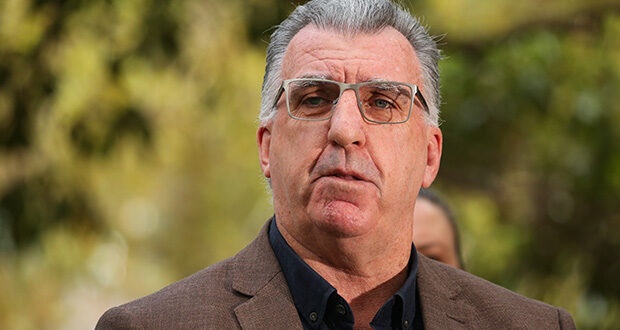Fixing aged care's workforce issues could resolve most of the sector's problems, two aged care experts have said, following last week's announcement of six home closures.
Last Thursday, aged care provider Wesley Mission announced it would close its remaining three facilities after facing difficulties attracting enough staff to meet the new standards.
Brightwater Care Group joined Wesley Mission shortly after, saying financial and staffing pressure led them to shut three of its smallest facilities.
Health Services Union (HSU) National President, Gerard Hayes, said the pay rise for the sector's workforce would significantly improve its retention and attraction issues.
"It all boils down to the workforce," Mr Hayes told Aged Care Insite.
"People may well enjoy working in aged care, but the economy is what it is at the moment, and it's getting harder to make ends meet.
"We're very concerned that this trend of beds and facilities closing continues if we can't attract and retain people in the industry."
Half of Australia's aged care workforce plans to leave the sector within the next three years due to overwork and low pay.
It's estimated that aged care providers will need to hire an additional 14,626 new workers in 2023-24 and 25,093 the following year to meet the new national staffing requirements.
Mr Hayes said that even though people might enjoy working in aged care, they're forced to leave the sector to financially support their household.
He said some agencies were actively recruiting aged care workers to deploy them back into facilities under a contractual agreement with better pay.
"Financially, aged care workers are going backwards," he said.
"Why work in a sector when you can earn more in other industries?"
Aged care workers are expected to receive a wage increase of 15 per cent this July, which is projected to cost the government $8bn across four years.
Mr Hayes said that while he continued to push for a 25 per cent pay rise, the current wage increase would help relieve some of the aged care providers' pressures.
According to federal data, at least 80 per cent of residential facilities were meeting the 24/7 nursing requirement.
Last week, Australia's Prime Minister defended the government's aged care reforms and reiterated providers did not need to close facilities if they worried they wouldn't meet the new mandates by July.
But as the July deadline looms and staffing pressures mount, many providers continue to close homes.
Mr Hayes said he was unsure whether actually 80 per cent of the aged care homes had enough staff employed to meet the new requirements.
Many people are leaving the aged care workforce, so even if they have enough staff now, I don't know how they'll be able to maintain the appropriate levels, he said.
"But to close facilities – I don't think aged care providers such as Wesley Mission would take this sort of action lightly.
"If they just can't afford to run a facility that'll be safe and meet the residents' needs, it might be the only option available to them.
"It goes a long way that while the government's done the right thing in terms of underpinning the 15 per cent wage increase, the issues in the sector aren't over yet."
Aged care minister Anika Wells said the government would work closely with aged care providers to meet the 24/7 nursing mandate through educational support and specific programs.
Five per cent of aged care homes are eligible for an exemption and have until July 2024 to recruit the required staff.
Non-compliant homes who are not eligible for an exemption need to provide evidence to the Aged Care Quality and Safety Commission (ACQSC) they've undertaken steps and can deliver safe and quality care.
"A provider that can demonstrate continuous efforts towards compliance, while delivering safe and quality care and effectively managing risks to consumers, is unlikely to see severe enforcement action," according to the Commission.
Earlier this month, aged care specialist StewartBrown published its latest report on the sector's performance.
Residential aged care facilities experienced a significant increase in daily loss per bed, from $10.31 per bed per day last year to $15.98 per bed per day – a 54 per cent increase.
In total, 63 per cent of aged care homes operated at a loss compared to 60 per cent in December 2021.
The occupancy rate of available beds also dropped from 91.5 per cent last year to 90.8 per cent.
The accountancy firm called on the government to distribute emergency funding packages to prevent more aged care homes from closing under financial pressure.
"We're aware that many facilities have beds that aren't available due to their lack of staff," Mr Hayes said.
"Emergency packages would be nice, but ultimately, we need a lot of transparency about the funding and where that funding's going.
"And we need further enhancement for the ability for the government to observe what is happening within the facilities."
Australian Nursing & Midwifery Federation (ANMF) federal secretary Annie Butler said aged care providers should create better work environments for their employees.
Mrs Butler said nurses would return to the sector if it established policies and specific care minute requirements for nurse care, along with a wage raise.
"Aged care providers are not acknowledging the needs and concerns of nurses," she said.
"Rather than recognising what matters to nurses, aged care employers are trying to hide their failure to create work environments where nurses want to work.
"Any organisation failing to recognise the real causes of staff shortages in aged care is also failing to recognise the urgent and critical need to improve care for older Australians."
The aged care sector's reforms are projected to lead to a shortfall of 11,800 registered nurses by the upcoming financial year.
Mrs Butler said the federation continued to hear that many employers would only pass on the money to its workers if they're 'legally required.'
"There is no way this can be considered a successful recruitment strategy," Mrs Butler said.
Australia's major nursing union is currently in the midst of a court case against the NSW government after allegations of widespread understaffing and mistreatment in public hospitals.
The court case's first listing in the Supreme Court is anticipated on the 8th of May.
Do you have an idea for a story?Email [email protected]
 Aged Care Insite Australia's number one aged care news source
Aged Care Insite Australia's number one aged care news source


This might be a really good time to look at the top level management structure some facilities have adopted !!!
Maybe paying a variety of so-called experts enormous salaries could be the reasons for some facilities needing to close …..
For example, I note that a large Provider has just appointed a “Head of Sustainability”. His impressive qualifications & background include time working for a Mining Company with absolutely NO relation to the delivery of care to older people. To provide “sustainable” aged care does not need a PhD but, good old fashioned ‘common sense’ on the part of management & staff can be a good start.